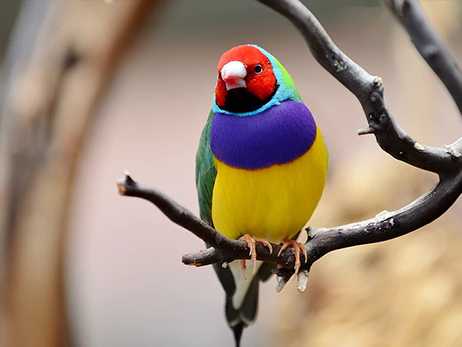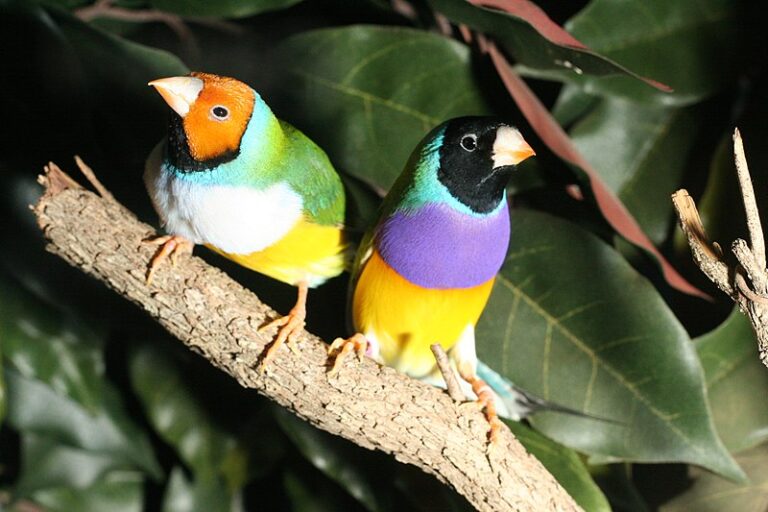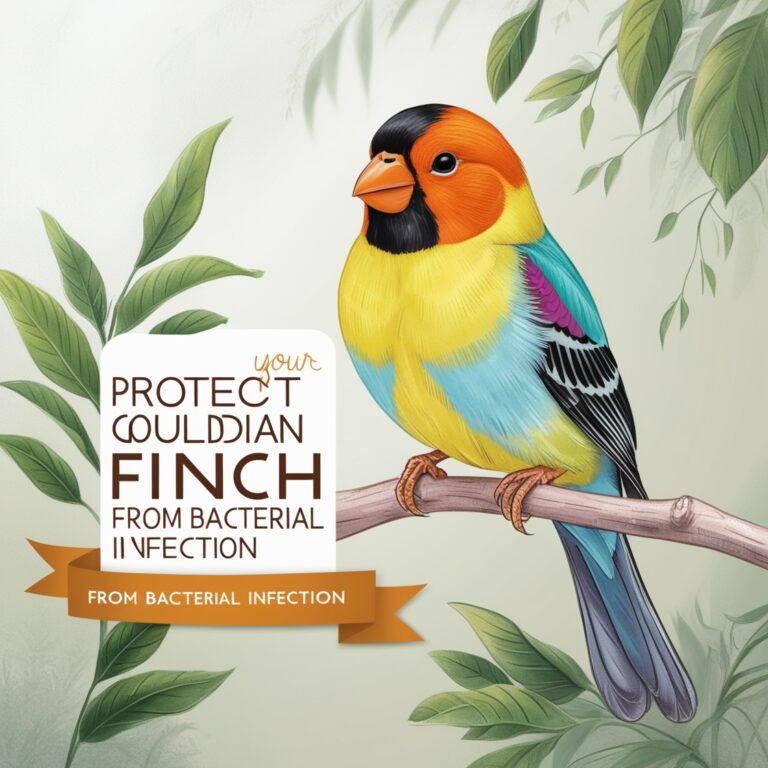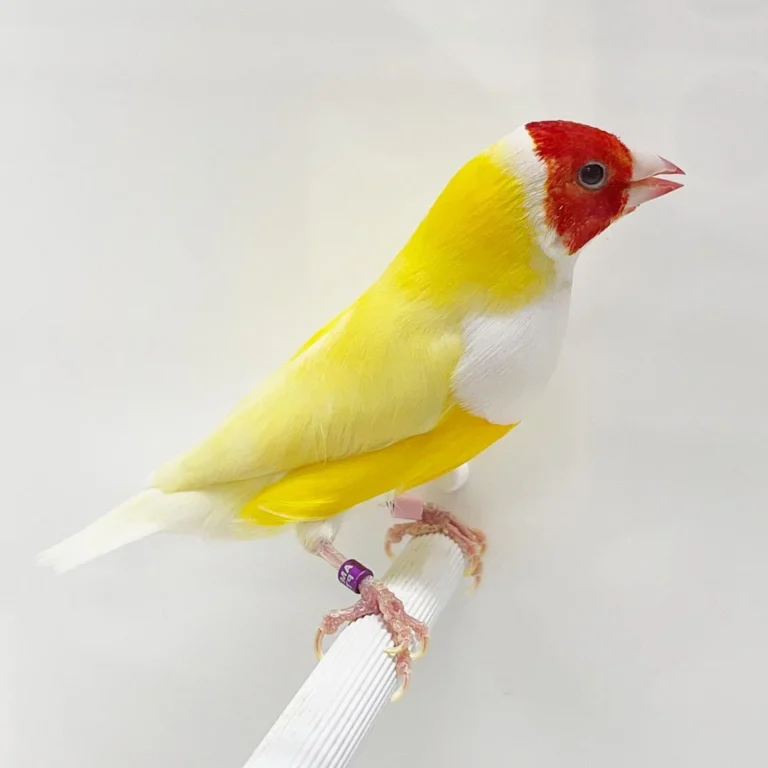Gouldian Finches: A Glimpse into the Life of Rainbow Bird
Gouldian Finches, often referred to as the “Rainbow Bird,” are one of the most strikingly beautiful birds in the avian world. Their vivid plumage, which comes in a spectrum of colors, makes them a favorite among bird enthusiasts and a symbol of natural beauty. But beyond their captivating appearance, Gouldian Finches have a rich life story that is as fascinating as it is colorful.
Introduction
Gouldian Finches (Erythrura gouldiae), native to the savannas of Northern Australia, are small passerine birds that are renowned for their spectacular and varied plumage. With their bright, jewel-like colors, they seem almost too exotic to be real, earning them the well-deserved nickname of “Rainbow Bird.” However, these birds are more than just a pretty face; they are also fascinating creatures with complex behaviors, interesting breeding habits, and specific care needs.
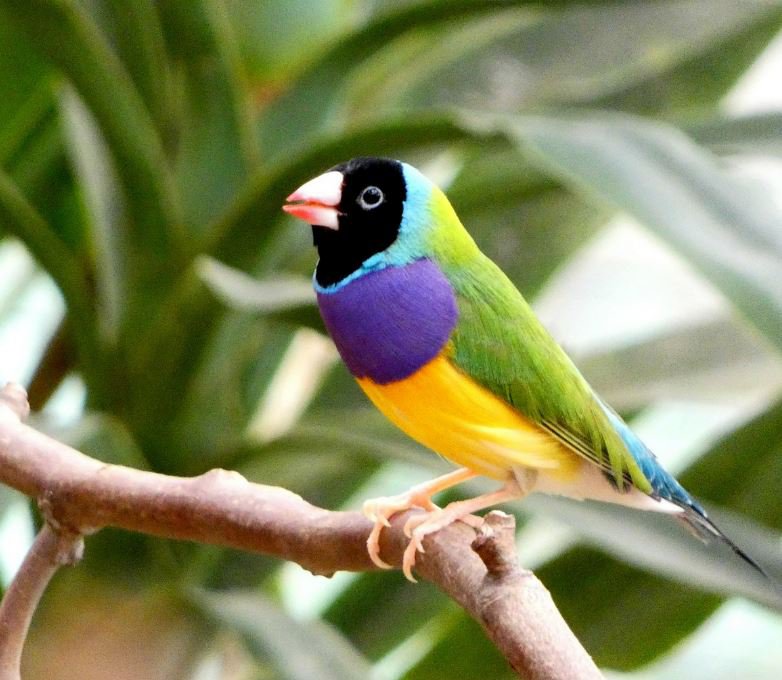
The Vibrant World of Gouldian Finches
Gouldian Finches are perhaps best known for their breathtaking array of colors. These birds display a remarkable diversity of hues, ranging from bright greens and yellows to deep blues and reds. Interestingly, these colors are not just for show; they play a crucial role in the social structure and mating rituals of the species.
Understanding Their Colors:
The vivid coloration of Gouldian Finches is due to the interplay of pigments and the microscopic structure of their feathers, which refracts light in various ways. This phenomenon, known as structural coloration, is responsible for the iridescent quality of their feathers. Male Gouldian Finches are typically more colorful than females, as their bright plumage is used to attract mates. However, even the females possess a delicate beauty with their slightly muted but equally enchanting colors.
Color Morphs:
Gouldian Finches come in several color morphs, primarily categorized by the color of their heads: red-headed, black-headed, and yellow-headed. Each of these morphs has its own unique charm and appeal. The red-headed Gouldian Finch, for instance, is often seen as the most striking, while the black-headed variant is more common in the wild. The yellow-headed morph is the rarest and is highly prized among breeders.
Habitat and Natural Behavior
In the wild, Gouldian Finches inhabit the tropical woodlands and savannas of Northern Australia. They are highly social birds, often found in large flocks, which helps protect them from predators. These finches are nomadic, following the availability of food and water, which varies with the season.
Natural Diet:
Gouldian Finches primarily feed on grass seeds in the wild, particularly those of sorghum and spinifex grasses. During the wet season, when seeds are abundant, these birds thrive and breed. However, in the dry season, food becomes scarce, and the finches must travel to find sustenance.
Breeding and Nesting Habits:
Gouldian Finches have a unique breeding season that coincides with the wet season in their native habitat. This is when food is plentiful, and conditions are ideal for raising their young. They typically nest in tree hollows, where they lay a clutch of four to eight eggs. Both parents share the responsibility of incubating the eggs and feeding the chicks once they hatch. The young fledge within three weeks, but they remain dependent on their parents for several more weeks as they learn to forage.
Caring for Gouldian Finches in Captivity
Gouldian Finches are popular in the aviculture community, not only for their stunning appearance but also for their relatively peaceful nature. However, they are not beginner-level birds, as they have specific care requirements that must be met to ensure their health and well-being.
Housing:
When keeping Gouldian Finches in captivity, it’s important to provide them with a spacious cage that allows for flight, as they are very active birds. The cage should be at least 3 feet long to accommodate their need for exercise. Additionally, the cage should be placed in a quiet, draft-free area with plenty of natural light but out of direct sunlight to avoid overheating.
Diet in Captivity:
Replicating the natural diet of Gouldian Finches is crucial for their health. In captivity, their diet should consist of a high-quality seed mix, supplemented with fresh vegetables, fruits, and egg food. Providing a variety of foods ensures that they receive all the necessary nutrients. Calcium supplements, such as cuttlebone, are also essential for their bone health, especially during the breeding season.
Temperature and Humidity:
Gouldian Finches are accustomed to the warm, humid climate of Northern Australia. Therefore, maintaining an appropriate environment is key to their well-being. They thrive at temperatures between 70-80°F (21-27°C) and in humidity levels of around 50-60%. Sudden changes in temperature or exposure to drafts can lead to respiratory issues, which are a common concern for these birds.
Breeding Gouldian Finches in Captivity
Breeding Gouldian Finches can be a rewarding experience, but it requires careful planning and attention to detail. These birds are somewhat more challenging to breed than other finch species due to their specific needs during the breeding season.
Selecting Breeding Pairs:
When choosing breeding pairs, it’s important to consider the health and genetic diversity of the birds. Pairs should be matched not only by their color preferences but also by their genetic background to avoid inbreeding, which can lead to health issues in the offspring.
Nesting Requirements:
Providing a proper nesting environment is crucial for successful breeding. Gouldian Finches prefer to nest in enclosed spaces, so offering them a nest box with a small entrance hole is ideal. The nest should be lined with soft materials such as coconut fiber or fine hay. It’s also important to ensure that the breeding pair has a quiet and stable environment during this time, as stress can cause them to abandon the nest.
Care of Chicks:
Once the chicks hatch, they require constant care and feeding. The parents will feed the chicks a diet rich in protein, often regurgitating soft food that is easier for the chicks to digest. As the chicks grow, they will start to explore the nest and eventually fledge, but they will still depend on their parents for food until they can eat independently.
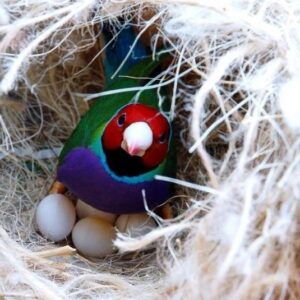
Common Health Issues in Gouldian Finches
While Gouldian Finches are generally hardy birds, they can be prone to certain health issues, especially if their environmental or dietary needs are not met. Being aware of these potential problems and knowing how to prevent them is key to keeping your finches healthy. Illness Information.
Respiratory Issues:
Gouldian Finches are particularly susceptible to respiratory infections, which are often caused by exposure to drafts, cold temperatures, or dusty environments. Symptoms include labored breathing, tail bobbing, and a lack of energy. If you notice any of these signs, it’s important to consult an avian veterinarian promptly.
Nutritional Deficiencies:
A diet that lacks essential nutrients can lead to a variety of health problems in Gouldian Finches. For example, a deficiency in calcium can cause weak bones and egg-binding in females, while a lack of vitamin A can lead to respiratory issues and poor feather quality. Ensuring a balanced diet with a variety of foods is essential for preventing these problems.
Parasites:
Like all birds, Gouldian Finches can be affected by parasites such as mites and lice. These pests can cause discomfort and lead to more serious health issues if not treated. Regularly cleaning the cage and providing a balanced diet will help to prevent infestations. If you suspect your birds have parasites, treatment with a suitable avian-safe product is necessary.
The Social Life of Gouldian Finches
Gouldian Finches are social birds that thrive in the company of their own kind. In the wild, they live in large flocks, and even in captivity, they prefer to be kept in groups rather than alone. However, managing a group of Gouldian Finches requires an understanding of their social dynamics.
Group Dynamics:
In a flock, Gouldian Finches establish a social hierarchy, with more dominant birds typically taking the lead. It’s important to observe the interactions within the group to ensure that all birds are getting along and that no single bird is being bullied or excluded.
Mixed Aviaries:
Gouldian Finches can be kept in mixed aviaries with other finch species, provided that the other species have similar care requirements. However, it’s crucial to monitor the aviary closely, as not all finches will get along, and overcrowding can lead to stress and aggression.
Why Gouldian Finches Are Called “Rainbow Birds”
The nickname “Rainbow Bird” is well-deserved when it comes to Gouldian Finches. Their brilliant array of colors is reminiscent of a rainbow, making them one of the most visually striking bird species in the world. But beyond their appearance, the name also reflects their vibrant personality and the joy they bring to those who keep them.
A Symbol of Natural Beauty:
Gouldian Finches have been admired for their beauty since they were first discovered. They are often used as a symbol of the vibrant diversity of life and the incredible adaptations that occur in nature. For birdkeepers and enthusiasts, owning Gouldian Finches is like having a living rainbow in their home.
Cultural Significance:
In some cultures, Gouldian Finches are also seen as symbols of joy and happiness. Their bright colors and cheerful demeanor make them a favorite subject in art and literature, representing the beauty of the natural world.
Conclusion
Gouldian Finches, with their dazzling colors and delightful personalities, are truly a treasure in the avian world. Whether admired from afar or kept as pets, these “Rainbow Birds” bring a touch of natural wonder to any setting. Understanding their needs and behaviors is essential for anyone looking to keep these finches healthy and happy. By providing the right care, bird enthusiasts can enjoy the beauty and charm of Gouldian Finches for many years, creating a vibrant and joyful atmosphere in their homes.
Gouldian Finch Community
The internet has brought together a community of Gouldian finch enthusiasts. Online forums and social media groups provide a platform for sharing experiences, knowledge, and advice on caring for these beautiful birds. Engaging with the community can be valuable for both novice and experienced bird keepers.
To explore more about Gouldian Finch Click Here.
FAQs
What makes Gouldian Finches different from other finch species?
Gouldian Finches are distinguished by their extraordinary colors and the variety of color morphs within the species. Unlike many other finches, they require specific environmental conditions and a carefully balanced diet to thrive, making them more challenging to care for.
Can Gouldian Finches be kept with other birds?
Yes, Gouldian Finches can be kept with other finch species in a mixed aviary, provided the other birds have similar care requirements. However, it’s essential to monitor their interactions to prevent stress or aggression.
What do Gouldian Finches eat in captivity?
In captivity, Gouldian Finches should be fed a high-quality seed mix, supplemented with fresh vegetables, fruits, and egg food. Calcium supplements are also important, especially during the breeding season.
How do I prevent health issues in Gouldian Finches?
Preventing health issues in Gouldian Finches involves maintaining a clean and stable environment, providing a balanced diet, and avoiding sudden changes in temperature. Regular health check-ups with an avian vet can also help catch and treat potential problems early.
Why are Gouldian Finches called “Rainbow Birds”?
Gouldian Finches are called “Rainbow Birds” because of their vibrant, multi-colored plumage, which resembles the colors of a rainbow. Their bright and varied hues make them one of the most visually striking bird species.
How long do Gouldian Finches live?
With proper care, Gouldian Finches can live between 5 to 8 years in captivity. Providing a well-maintained environment and a nutritious diet are key factors in ensuring their longevity.
